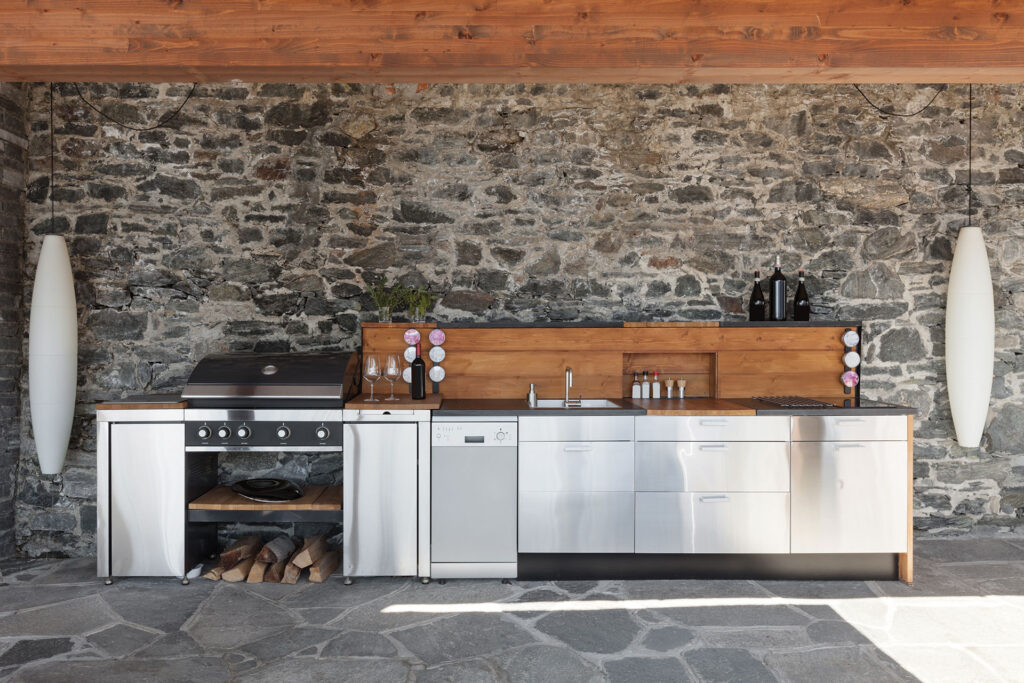Beyond the grill.
by Gabrielle Grosbety
During the pandemic, as we were all forced into hermetic, insular lifestyles, I craved a connection to the outdoors—and to others—as never before. This led directly to fantasies of building an outdoor kitchen: a cozy, communal entertainment space with a deluxe grill, built-in-seating, a wet bar (maybe even a pizza oven). For those similarly inspired, outdoor kitchen guru Peter Dooney of Greenwich, CT-based Dooney Construction, shares his insider pro tips before breaking ground.
Consult With Experts When it comes to your project’s budget, layout and design, work smarter, not harder. Kitchen planners and builders know all the details.
Check Existing Lines Consider your utility, water and gas lines as well as your drainage system since these will directly impact the types of appliances you can install. Wherever possible, connect to existing lines—it’s cheaper and easier.
Hire Pros If you do install new lines, Dooney says, “You need to contact professionals who are specialized and well-trained in their field to help—a plumber to do the gas, a water electrician for the electric and a stone mason for fabricating all the stonework.”
Zoning Permissions Since these vary, make sure you’re up to date on your area’s requirements. Before construction begins, you’ll need to show your plot plan to the zoning department.
Fire Hazards Consult with your builder on all potential combustibility issues and keep minimum clearances in mind.
Tough Materials Given our region’s wintry climates and freeze-thaw cycles, outdoor kitchen materials must be durable and able to withstand the elements. The framing should be concrete block since it’s long-lasting and non-combustible. Dooney also recommends using slate, brick and stone, given their longevity and non-flammability.

Comments are closed.